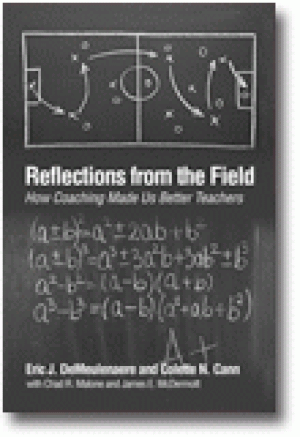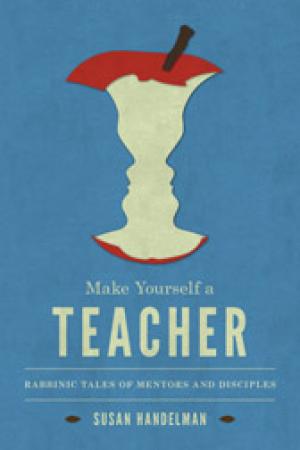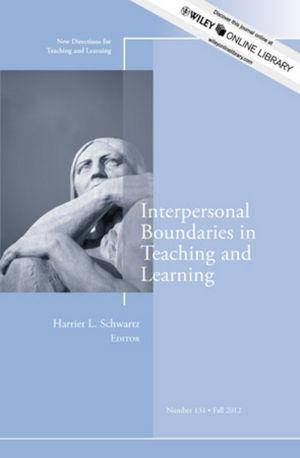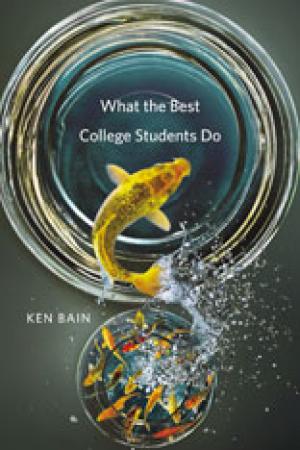Resources
Reviews briefly the scope of duties, effective strategies, and necessary skills to achieve effective advising beyond a perfunctory “signatory function.” Includes a brief list of references. Idea Paper no. 3, from the series developed by the Center for faculty Evaluation and development, Kansas State University.
Personal reflection on the importance of informal moments in the education of students, and the implications for our metaphor of teaching.
Reviews research and explains several concrete best practices on how to motivate students. Idea Paper no. 1, from the series developed by the Center for Faculty Evaluation and Development, Kansas State University.
Aimed at students, this site is a user-friendly bulleted list of briefly treated topics, all related to college study skills and how to learn.
Responding To Distressed Students Extensive list of topics, prepared for UC Santa Barbara teaching assistants, with do’s and don’ts in responding to student issues such as anxiety, hazing, depression, eating disorders.
Mentoring is an important but often overlooked resource in theological education and students' academic and spiritual formation. This essay profiles the mentoring practices and postures of the writing tutor and the spiritual director as exemplars of academic and spiritual mentoring. An extended probe of this analogy affirms the integration of academic and spiritual formation as a core value in theological education; identifies mentoring in theological education as a hidden treasure fostering this integration and warranting attention as a theological practice; and re-envisions the theological practice of mentoring under the traditional rubric of the “care of souls,” embracing the relational, educational, formational, spiritual, and rhetorical dimensions of this practice.

Click Here for Book Review Abstract: The coaching metaphor first entered the educational literature over twenty-five year ago when Ted Sizer urged classroom teachers to model the pedagogical relationship between coaches and athletes. Yet, since then, educators have rarely drawn direct lessons from the athletic arena for their practice... until now. DeMeulenaere, Cann, Malone and McDermott, in this groundbreaking analysis, explore the implications of athletic coaching for improved pedagogy. They offer concrete lessons and suggestions for best practices in the classroom. (From the Publisher)

National Jewish Book Award finalist in Contemporary Jewish Life and Practice category Make Yourself a Teacher is a teaching book and a book about teaching. It discusses three dramatic, well-known stories about the student and teacher Rabbi Eliezer ben Hyrcanus from the Oral Torah. The stories of R. Eliezer serve as teaching texts and models for reflection on the teacher/student relationship in the Jewish tradition and in contemporary culture, with special emphasis on the hevruta mode of Jewish learning, a collaborative process that invites the reader into a dialogue with teachers past and present. Susan Handelman considers how teacher/student relations sustain and renew the Jewish tradition, especially during troubled times. As a commentary on historical and contemporary educational practices, she asks a range of questions about teaching and learning: What is it that teachers do when they teach? How do knowledge, spirituality, and education relate? What might Jewish models of study and commentary say about how we teach and learn today? Handelman not only presents pedagogical issues that remain controversial in today's debates on education but she also brings the stories themselves to life. Through her readings, the stories beckon us to sit among the sages and be their students. Susan Handelman is professor of English at Bar-Ilan University, Israel. (From the Publisher)

New Directions for Teaching & Learning, Number 131 While issues of interpersonal boundaries between faculty and students is not new, more recent influences such as evolving technology and current generational differences have created a new set of dilemmas. How do we set appropriate expectations regarding e-mail response time in a twenty-four-hour, seven-day-a-week Internet-connected culture? How do we maintain our authority with a generation that views the syllabus as negotiable? Complex questions about power, positionality, connection, distance, and privacy underlie these decision points. This sourcebook provides an in-depth look at interpersonal boundaries between faculty and students, giving consideration to the deeper contextual factors and power dynamics that inform how we set, adjust, and maintain boundaries as educators. This is the 131st volume of this Jossey-Bass higher education series. New Directions for Teaching and Learning offers a comprehensive range of ideas and techniques for improving college teaching based on the experience of seasoned instructors and the latest findings of educational and psychological researchers. From the Publisher

The author of the best-selling What the Best College Teachers Do is back with more humane, doable, and inspiring help, this time for students who want to get the most out of college—and every other educational enterprise, too. The first thing they should do? Think beyond the transcript. The creative, successful people profiled in this book—college graduates who went on to change the world we live in—aimed higher than straight A’s. They used their four years to cultivate habits of thought that would enable them to grow and adapt throughout their lives. Combining academic research on learning and motivation with insights drawn from interviews with people who have won Nobel Prizes, Emmys, fame, or the admiration of people in their field, Ken Bain identifies the key attitudes that distinguished the best college students from their peers. These individuals started out with the belief that intelligence and ability are expandable, not fixed. This led them to make connections across disciplines, to develop a “meta-cognitive” understanding of their own ways of thinking, and to find ways to negotiate ill-structured problems rather than simply looking for right answers. Intrinsically motivated by their own sense of purpose, they were not demoralized by failure nor overly impressed with conventional notions of success. These movers and shakers didn’t achieve success by making success their goal. For them, it was a byproduct of following their intellectual curiosity, solving useful problems, and taking risks in order to learn and grow. (From the Publisher)